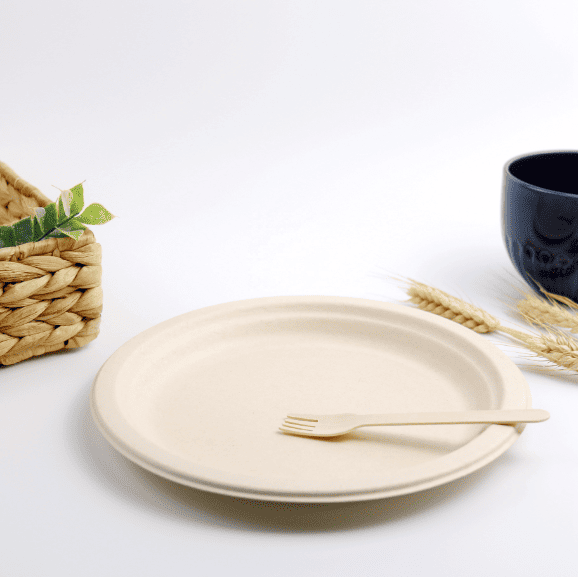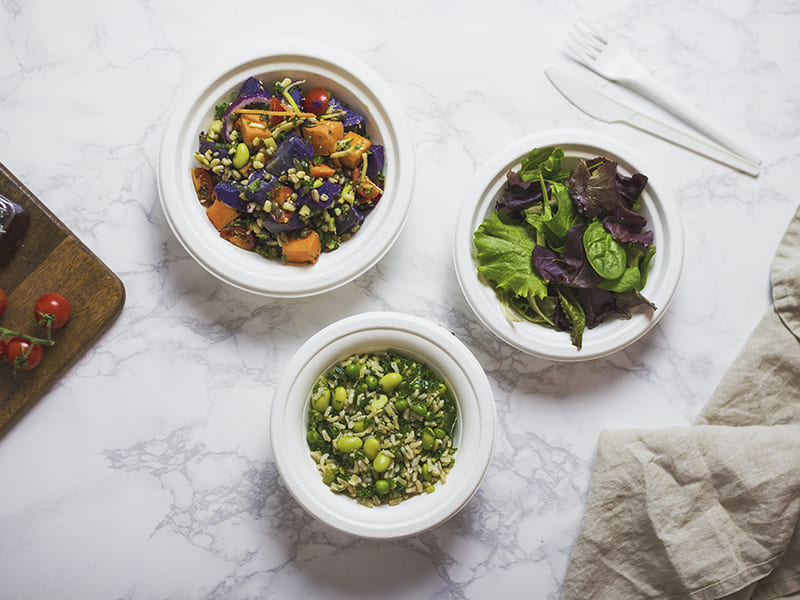Material Ranking and Insights on Eco-Friendly Takeaway Boxes Amid Global Plastic Bans
Oct 11, 2024
With the increasing global push to ban single-use plastics, both businesses and consumers are searching for sustainable alternatives for products like takeaway containers. In the food packaging sector, various eco-friendly materials have emerged, each with distinct characteristics. This article ranks the top materials for eco-friendly takeaway boxes and highlights their features.

1.Sugarcane Pulp (Bagasse)
-
- Ranking: #1
- Overview: Sugarcane pulp, or bagasse, is a byproduct of sugar production. It's a renewable, biodegradable material gaining popularity for its eco-friendly qualities.
- Key Features:
- 100% biodegradable and compostable
- Sturdy, oil, and water-resistant
- Microwave- and freezer-safe
- Utilizes agricultural waste, minimizing the need for virgin resources
- Environmental Impact: Bagasse decomposes naturally within months, contrasting sharply with plastic's centuries-long lifespan. Its production also repurposes agricultural byproducts, reducing waste. Bagasse takeaway containers exemplify this sustainable approach.
2.Kraft Paper
-
- Ranking: #2
- Overview: Kraft paper is made from chemical pulp through the kraft process and is widely used in packaging due to its strength and durability.
- Key Features:
- Recyclable and biodegradable
- Strong, durable, and tear-resistant
- Versatile for various packaging types
- Environmental Impact: Kraft paper is eco-friendly, easily recyclable, and produced with fewer chemicals than other paper types, naturally decomposing to lessen landfill waste. Compostable cake dish bulks often use this material to promote sustainability.
3.Bamboo
-
- Ranking: #3
- Overview: Bamboo is a rapidly renewable resource known for its strength and versatility. It’s used in packaging as a robust, eco-friendly material.
- Key Features:
- Biodegradable and compostable
- Durable and moisture-resistant
- Grows quickly without fertilizers or pesticides
- Environmental Impact: Bamboo's rapid growth and minimal agricultural input make it a sustainable choice, and its containers decompose without contributing to long-term waste. Compostable rectangular food trays made from bamboo are ideal for various food items.
4.Cornstarch (PLA Bioplastic)
-
- Ranking: #4
- Overview: PLA (Polylactic Acid) is a bioplastic made from renewable resources like cornstarch or sugarcane, serving as an alternative to traditional petroleum-based plastics.
- Key Features:
- Biodegradable under specific conditions
- Clear and smooth, resembling conventional plastic
- Lightweight yet relatively strong
- Environmental Impact: Although PLA is biodegradable, it requires industrial composting to break down effectively. Improper disposal can still lead to environmental pollution.
5.Palm Leaves
-
- Ranking: #5
- Overview: Palm leaves can be pressed into shapes to create durable, biodegradable containers. They are chemical-free and often favored for eco-conscious packaging.
- Key Features:
- 100% biodegradable and compostable
- Sturdy and heat-resistant
- Naturally rustic and aesthetically pleasing
- Environmental Impact: Made from fallen leaves, palm leaf containers are highly sustainable, produced with minimal energy and no harmful chemicals.
Conclusion
As global bans on single-use plastics expand, eco-friendly materials like sugarcane pulp, recycled paper, and bamboo are set to lead the future of takeaway packaging. Each material boasts unique strengths and environmental benefits, all aimed at reducing plastic reliance and promoting a greener planet. Additionally, products such as disposable tableware from China factory supply and heavy-duty dinner plates are increasingly focusing on sustainable options to meet consumer demands for eco-friendly alternatives.


